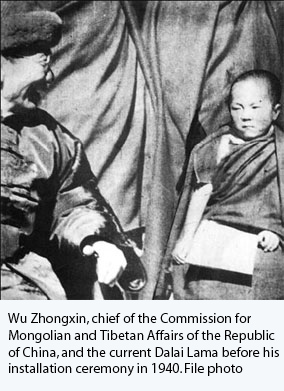Tibet is located in Southwest China. The people who lived there struck up links with the Han in the Central Plains long before the Christian era. Throughout centuries, the numerous tribes scattered across the Qinghai-Tibet Plateau gradually developed into the Tibetan ethnic group.
By the Tang Dynasty (AD 618-907), the Tibetans and Hans had, through marriages between royal families and other alliances, cemented unity and political friendship and formed close economic and cultural relations. This created a solid foundation for the ultimate founding of a unified nation.
A statue of the Tang Princess Wencheng, who married the Songtsan Gambo, the Tubo king, in 641, is still enshrined and worshiped at the Potala Palace in Lhasa, capital of the Tibet autonomous region.
The Tang-Tubo Alliance Monument, which marks the meeting between Tang and Tubo and was

erected in 823, still stands in the square in front of the Jokhang Monastery. The monument's inscription reads in part: "The two kings, like uncle and nephew, having come to the agreement that their territories be united as one, have signed this alliance of great peace to last for eternity! May God and humanity bear witness thereto so that it may be praised from generation to generation."
In the mid-13th century, Tibet was officially incorporated into the territory of China's Yuan Dynasty. Since then, although China experienced several dynastic changes, Tibet has remained under the jurisdiction of the central government of China.
Yuan Dynasty (1271-1368)
The Yuan emperor established the Xuanzhengyuan, or Ministry for the Spread of Governance, to directly handle important military and political affairs involving the Tibet region. The emperor selected the people working for the ministry, and its reports were submitted directly to the monarch.
The central government of the Yuan Dynasty sent officials into Tibet to set up post stations, which varied in size according to the local population, topography and resources. These stations were linked up in a communication line extending from Tibet up to Dadu (present-day Beijing).